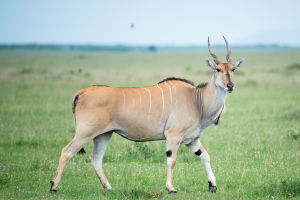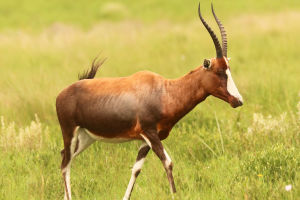The character Timon from The Lion King, he's actually a meerkat. These small mammals are known for their neurotic yet endearing nature, with their tiny bodies and quick movements often melting the hearts of those who encounter them.
Meerkats are the only species in the genus Mongoose and are carnivorous animals that reside in the Kalahari Desert across South Africa, Namibia, and southwestern Angola. They are small, diurnal animals with males averaging 731 grams and females 720 grams. Their elongated torsos and limbs allow them to reach lengths of 25-35 centimeters, with tail lengths of 17-25 centimeters. The meerkats' tails are thin, pointed, and black at the end, which serves the same purpose as sunglasses, enabling them to see clearly in bright sunlight without being blinded.
The meerkats have small, dark, crescent-shaped ears that can close up to prevent sand from entering their ears when digging a hole. They mainly feed on insects but are voracious eaters, and will consume almost anything smaller than themselves, including spiders, centipedes, marmots, lizards, guardians, snakes, frogs, toads, plants, eggs, and small mammals. Meerkats have evolved to be immune to many poisons, which allows them to feed on scorpions (including stings) and some venomous snakes without causing discomfort, poisoning, or death.
In captivity, meerkats are easy to keep and have a varied diet. They eat barley worms, yellow mealworms, crickets, grasshoppers, cherry cockroaches, dog and cat feed, mice, cooked eggs, and other animal foods. They also enjoy fruits and vegetables such as carrots, sweet potatoes, corn, apples, bananas, and more.
Meerkats are gregarious animals and are excellent at digging holes. They live in large underground burrows with several entrances and leave their young and a few adults to care for them while they go out to feed during the day. They are highly social animals with a specific hierarchy, with groups of up to forty individuals.
The meerkats in the same group will often groom each other to reinforce their social bonds. The leader's mate will leave scent marks on the group's subordinates to show their authority, and this is often accompanied by subordinates licking and grooming the leader's mate. These actions typically occur when the group members reunite after a period of separation.
Meerkats exhibit altruistic behavior within their groups, with one or more standing sentries to warn other meerkats of approaching danger while they forage or play. When a predator is spotted, the meerkat sentry will call out a warning to the rest of the group to flee or hide in a hole scattered throughout their territory. The sentry will be the first to emerge from the hole to detect the predator and continue to call out to keep the rest of the group inside the hole. If there is no threat, the sentry stops calling out, and the rest of the group emerges safely.


